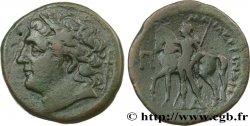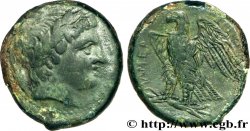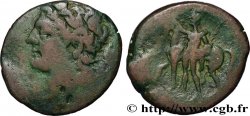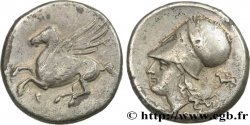E-auction 96-50019 - bgr_343510 - SICILY - MESSANA Pentonkion
得先注册又得到批准才可以报价。为了报价注册. 客户应该得到公司允许,那种过程需要 48 个小时。别等出售结束那一天才登记。您报价的话等于您赞成买那物品,而且按« 保价 » 证明您接受 cgb.fr 因特网拍卖使用法.
报价时只可以出全数值欧元总额。物品描述也说明销售结束时间,结束后出价都不会生效。 报价命令转达有时变动,等到最后秒钟增加否决的可能会。想多了解的话请注意 因特网拍卖常问
购货人不付费
购货人不付费
| 估算 : | 125 € |
| 价格 : | 77 € |
| 最高出价 : | 125 € |
| 拍卖结束日期 : | 16 February 2015 15:04:00 |
| 竞拍人 : | 5 竞拍人 |
种类 Pentonkion
日期: c. 208-200 AC.
铸币厂名称/城市 Messine, Sicile
材质 copper
直径 26 mm
模子方针 9 h.
重量 10,28 g.
稀少度 R1
关于品相的说明
Exemplaire sur un flan large et irrégulier. Beau portrait d’Arès. Frappe un peu faible au revers sur la légende.
Patine verte légèrement granuleuse
出版目录中的项代码 :
正面
正面的文字 ANÉPIGRAPHE.
正面的说明书 Tête laurée d’Arès à gauche ; grènetis circulaire perlé.
背面
背面的说明书 Cavalier nu debout à gauche, la chlamyde tombant sur l’épaule et enroulé sur le bras gauche, tenant son cheval par la bride de la main droite et une javeline transversale de la main gauche ; grènetis circulaire.
背面铭文 MA-MER-TINWN/ P
背面的翻译 (des Mamertins/ 5).
评论
Pour ce type. G. Buceti a relevé 121 exemplaires avec des poids compris entre 8,97 g et 14 ,11 g. Les auteurs du Mamertini ont isolé cinq variétés différentes pour un total de 153 exemplaires dont trois sans symbole placé derrière la tête au droit (casque ou glaive. Notre variété se caractérise par une césure de légende de revers.
For this guy. G. Buceti recorded 121 examples with weights between 8.97 g and 14.11 g. The authors of Mamertini isolated five different varieties for a total of 153 examples, three of which without a symbol placed behind the head on the right (helmet or sword. Our variety is characterized by a caesura in the reverse legend
For this guy. G. Buceti recorded 121 examples with weights between 8.97 g and 14.11 g. The authors of Mamertini isolated five different varieties for a total of 153 examples, three of which without a symbol placed behind the head on the right (helmet or sword. Our variety is characterized by a caesura in the reverse legend







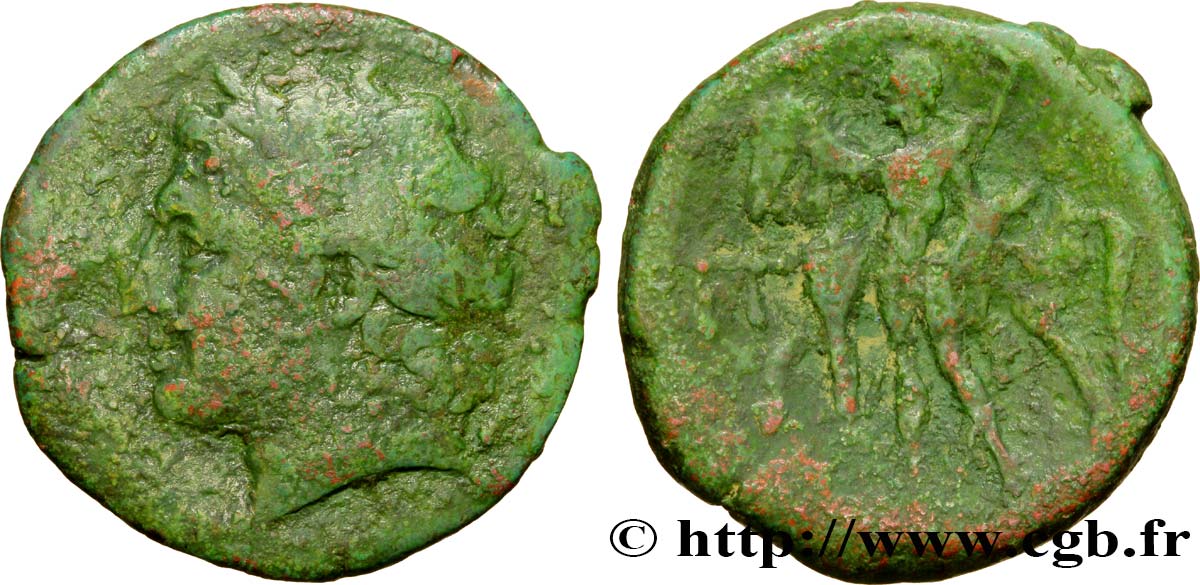
 对产品描述纠错
对产品描述纠错 打印
打印 分享我的选择
分享我的选择 提问
提问 Consign / sell
Consign / sell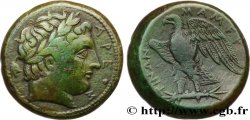
 产品介绍
产品介绍